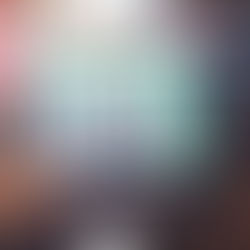Non -Laser Tattoo Removal
This treatment utilizes similar methods as having the original tattoo. The removal formula is delivered to the ink using a tattoo or permanent make-up machine, therefore the treatment can only be performed by a trained tattoo or permanent make-up artist or medical professional. The extraction solution is specifically designed to blend with and capture the original tattoo ink. The formula then forms into a thicker substance which the skin easily pushes out taking the captured tattoo ink with it.(A crust containing the tattoo ink will form over the treated area, over the next couple of weeks as the skin heals it will push more of the unwanted ink out. The crust will start to naturally fall away taking that unwanted tattoo ink with it.)
The treated area should be kept dry after treatment and while the crust is on the skin. Some of the remaining ink can also move into the epidermis the layer of skin that is naturally being constantly shed and thus the area may lighten further over the following weeks. A number of treatments are normally required to completely remove a tattoo. After the treatment course is finished the skin should return to its natural state over a period of months*. There are numerous benifits to this method of removal compared to other methods.
This treatment is substantially less painful than other removal methods and the treatment course and subsequent tattoo removal is typically much faster and more effective than laser removal options, including effective removal of all tattoo colors.
What to expect after..
The treated are should be allowed to heal for a minimum of 21- 30 days following treatment before subsequent treatments. If color is to be reapplied allow 2 months following final treatment. After treatment the skin implanted pigment being removed will be reddish-brown in color. When you leave yourr appoint the removal area will be darker in color than when you started. This is because the removal solution is drawing the pigment to the surface. Keep the fresh removal area dry and clean. Do not apply aftercare ointment, because you want it to dry out and pull the remaining pigment from the skin. Healing will be the same as when implanting pigment. Allow 21 to 30 days between appointments. Sloughing off of the discolored skin (just like as if it were pigment). New skin will be exposed; this new skin will have a pinkish cast, which will gradually return to your normal skin color.redness which will gradually subside. It is important to note that with any method or technology used to effect tattoo removal there are risks involved which may include permanent scarring. There are a number steps that can be utilised to reduce these risks and there are treatments available to reduce scarring should it occur. Unfortunately tattoos are not as easy to remove as they are to apply.
* As with any method of tattoo removal there are some risks inherrent in attempting to remove a tattoo, scar tissue may be evident on the original tattoo and can form from attempted removal
Why not Laser?
LASER treatments are great for many medical procedures including tattoo removal at times,but when it comes to removing ink there are many unanswered questions and concerns. First is the fact that Laser does not remove the ink from the body. Amplified light passes through the epidermis and shatters the pigment particle via vibration. The molecular vibration then disrupts the dermal tattoo particles causing the lymphatic system to "eat up" the disrupted particles and remove the ink particles from the skin. The question is where does the ink go? According to world renowned UCLA professor Richard Bennett, "The pigment from Laser removal settles in the lymph glands and can easily settle in other organs." There is currently no data that can disprove highly undesirable systemic health effects of Laser tattoo removal and in particular the long-term effects which may contribute to specific types of cancer.
All in all it is wise to do your research and decide what option is best for you.










